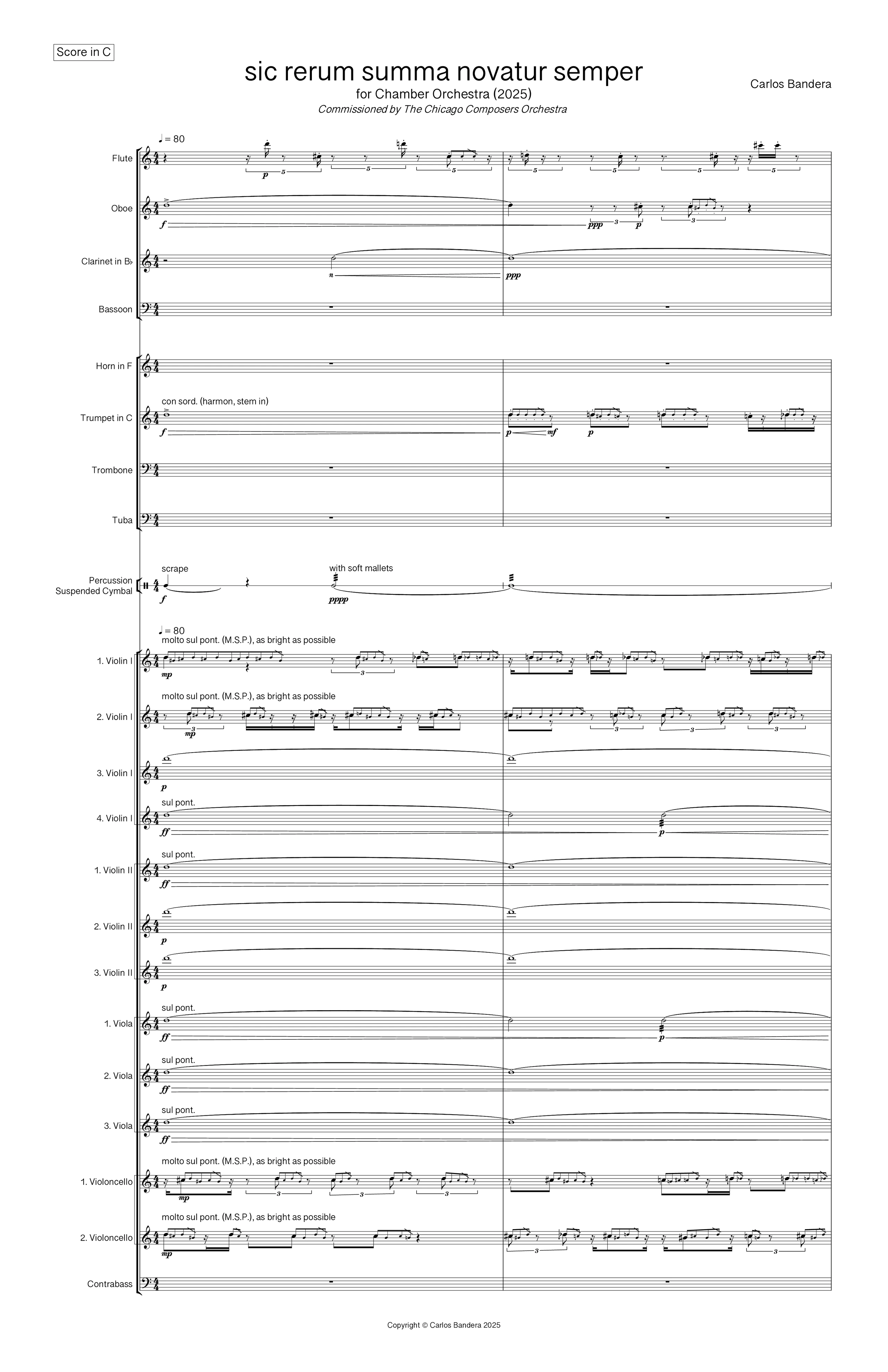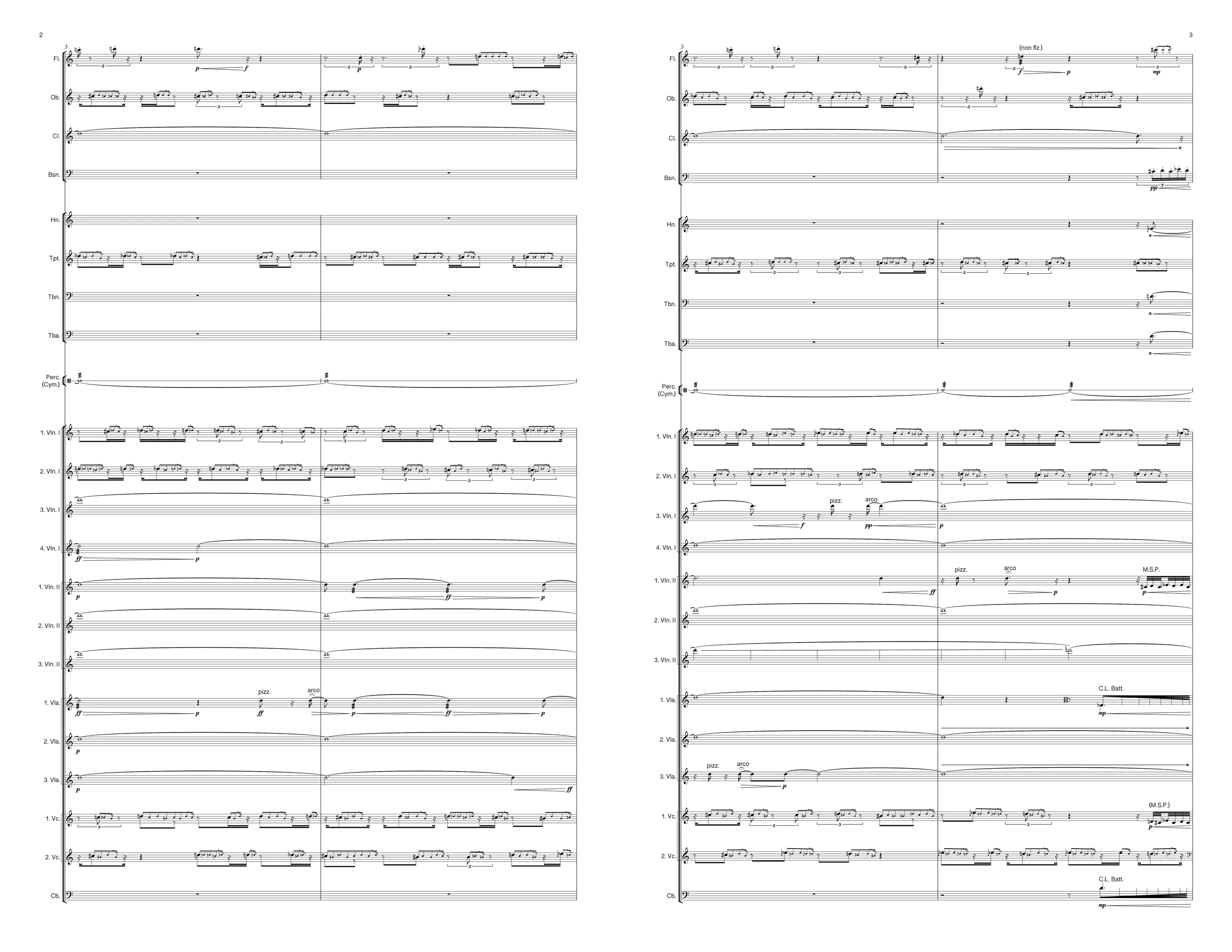

1 / 33
0:00/0:00
I have long been fascinated by Lucretius’s De rerum natura, a first-century BC poem, which beautifully describes his belief that everything in the universe is composed of a finite number of small, indestructible components called atoms that move through a void. When I set out to write sic rerum summa novatur semper (thus the sum of things is always renewed), I was interested in exploring sparseness and pointillism in ways that would be new to my music. Early in the writing process, this interest reminded me of Lucretius’s atoms, leading me to rediscover a passage from Book II of De rerum natura, which became a major source of inspiration for my piece:
“For Matter is not bound by fixed links; We see all things decay, and, as it were, Float down the stream of time; to all, in turn, Old age creeps on with visible advance; Decay of some leaves others free to grow, And thus the sum of things rests unimpaired; While these wax old, those flourish in their prime, But rest not there, but glide adown the tide. Thus the Great Whole is ceaselessly renewed, For mortals live by mutual interchange. — Some wax, some wane; thus generations change, And, like to runners in the Grecian game, Bear for brief time, and then to others pass, The lamp of life their hands are forced to yield.”
-From De Rerum Natura, Book II, translation by Charles Frederick Johnson.
The piece begins with a dense simultaneity of active textural layers. Gradually, these layers stretch outwards, as if we are zooming into the material, until the individual building blocks of these layers are revealed. In the second half of the piece, new harmonic material emerges and occasionally takes up fragments of material from the earlier textures.
Chicago Composers Orchestra, Allen Tinkham, April 26, 2025, St. James Cathedral, Chicago.